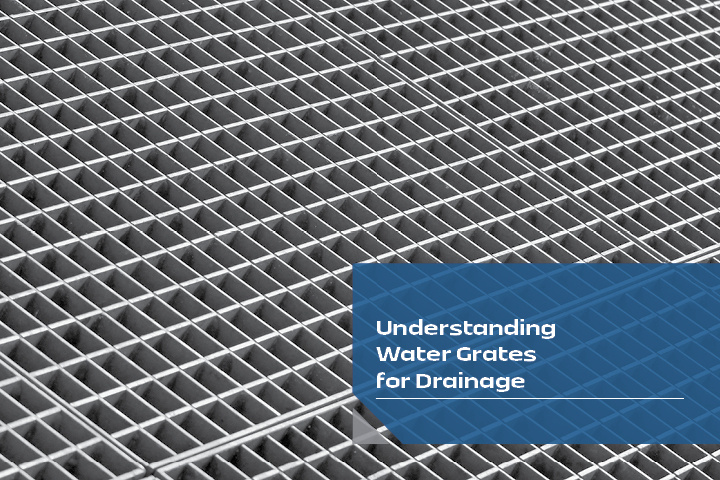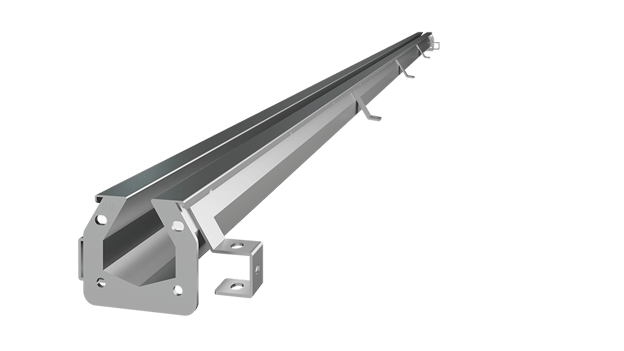With increased urbanization and development, managing water effectively in these environments is more important than ever. Instances of heavy rainfall and urban flooding are on the rise and the role of water grates in drainage systems has become pivotal.
Water grates for drainage are not just functional elements. They are a critical piece to ensuring public health and safety.
What are Water Grates?

At its core, a water grate is a cover for water channels or drains that allows water to flow through while blocking larger debris and allowing traffic to pass over easily. This simple yet ingenious solution is crucial in urban and industrial landscapes where effective water management can mean the difference between a clear street and a flooded street.
Drainage systems must be able to respond to rapid rainfall conditions. Water grates make it easier for water to quickly enter the drainage system so it can be managed. When water is unable to enter a drainage system faster than it accumulates, flooding occurs. They are not just about managing water; they are about integrating water management seamlessly into our built environments.
The Many Advantages of Water Grates
The advantages of using water grates for drainage are manifold. First, they are integral to efficient water management. By preventing waterlogging and flooding, water grates ensure that urban life can continue unhindered, even in adverse weather conditions. Furthermore, they play a significant role in environmental protection. By filtering out large debris, they help to prevent blockages in the drainage system, thus reducing soil erosion and water pollution.
Safety is another crucial benefit. In public areas, especially, water grates prevent the accumulation of water, thereby minimizing slip and fall hazards. They are not just about managing water; they are about safeguarding our communities and environment.
Exploring the Types of Water Grates for Drainage
The variety in water grates is vast in order to cater to different needs and environments. The Slot Drain 6000 Series, for example, is designed for areas where standard drainage solutions are sufficient. This series is ideal for pedestrian areas or places with light traffic. The low profile makes installation easy when depth is limited.
On the other hand, the 8000 Series is built for more demanding applications that are capable of withstanding the rigors of heavy-duty use, like in industrial settings or high-traffic areas. Beyond these, there are other common types such as trench grates and catch basin grates, each with their specific design and application.
Beyond Drainage: The Extended Purposes of Water Grates
Water grates serve purposes that extend far beyond simple drainage. Aesthetically, they can be designed to enhance the visual appeal of a landscape or architectural design.
They are also engineered to withstand heavy loads, which makes them an essential component in traffic management, particularly in areas with heavy vehicle movement. In terms of security, advanced grate designs can prevent unauthorized access to drainage systems to add an extra layer of security to sensitive areas.
Water Grates in Different Settings
The use of water grates spans a wide range of places and businesses. In urban settings, you'll find them on streets, in parks, and in other public spaces, where they manage rainwater and prevent flooding. Commercial enterprises, including shopping centers and office buildings, also rely on these grates to keep their premises dry and safe. Industrial and agricultural settings, with their unique water management needs, benefit greatly from the specialized designs of water grates, which can handle large volumes of water or specific types of runoff.
Tailoring Water Grates to Specific Needs
Each setting demands a specific type of water grate. In heavy-duty applications like industrial areas or transportation hubs, robust grates like those in the 8000 Series are essential. For areas where the aesthetic is just as important as functionality, such as residential and commercial landscapes, more decorative or subtle grates are often chosen. Specialized needs, such as managing agricultural runoff can also influence the type of grate selected to make sure that every environment has a solution tailored to its specific requirements.
Installation and Maintenance: Ensuring Longevity and Efficiency
While installing water grates is generally straightforward, adhering to specific guidelines is crucial for optimal performance. Regular maintenance is also essential to ensure the longevity and efficiency of these systems. Slot Drains are easy to install and virtually invisible after they are installed. The pre-sloped drain system helps prevent human error during installation and ensures a high-performing installed product. The sleek and clean lines easily blend into any aesthetic and can even be ADA-compliant to keep them safe. Cleaning Slot Drains is also easily accomplished with their specialized cleaning paddles.




